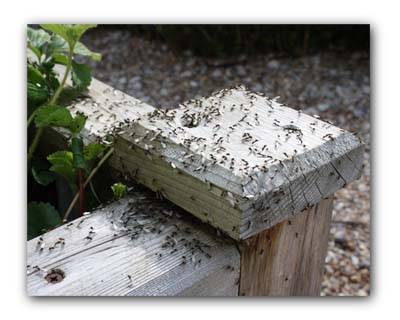'Flying Ant Day' isn't eagerly anticipated like an annual event such as a birthday or Christmas - in fact it's probably not anticipated at all, eagerly or otherwise - but to Britain's black ant population, it's of paramount importance.
Winged male and female ants develop from eggs safe in the bowels of their nests and await the day when conditions are perfect for them to take to the air to breed. Usually it's hot and humid when the winged ants emerge which is probably where the old wives tale that ants can sense when a storm is approaching stems from, but what is certain is that the males and fertile queens need to mate mid-air to ensure new ant colonies develop.
As we all know from experience, black ants (Lasius niger) will nest almost anywhere and from a gardening viewpoint, the jury is very much out on their usefulness. Yes, they pollinate fruit, vegetables and flowers and help aerate the soil with the labyrinths of tunnels and chambers which form their nests but they drop down the popularity scale by the way they 'farm' aphids to extract the sugary h oneydew the gardener's arch enemy produces. They'll even protect aphid colonies from predators to ensure their favourite tipple remains on tap!
oneydew the gardener's arch enemy produces. They'll even protect aphid colonies from predators to ensure their favourite tipple remains on tap!
Our 'man about the garden', Harrod Horticultural's photographer and horticulturist Martin Fiddes, was on hand to capture the emergence of several thousand winged ants from a nest (or nests) in the vicinity of our Kitchen Garden greenhouse, with one colony - obviously with excellent taste - choosing to nest in one of our Superior Raised Beds!
Kitchen Gardener Lynn reports that the soil in the bed is exceptionally fine and well aerated after the ants' prologed excavations but doesn't feel the strawberries have been unduly affected. For the record, these ants were recorded swarming in East Anglia on August 2nd!
UK Manufacturing since 1954



























